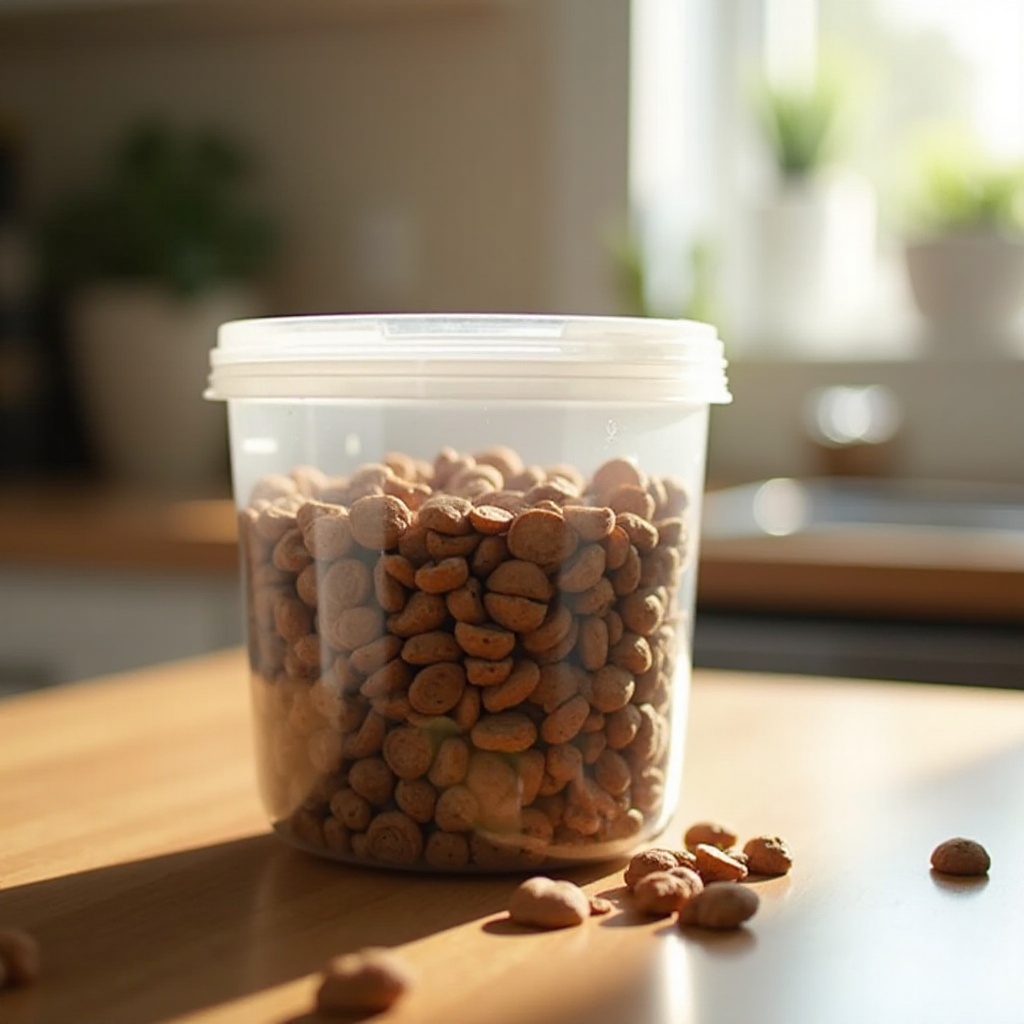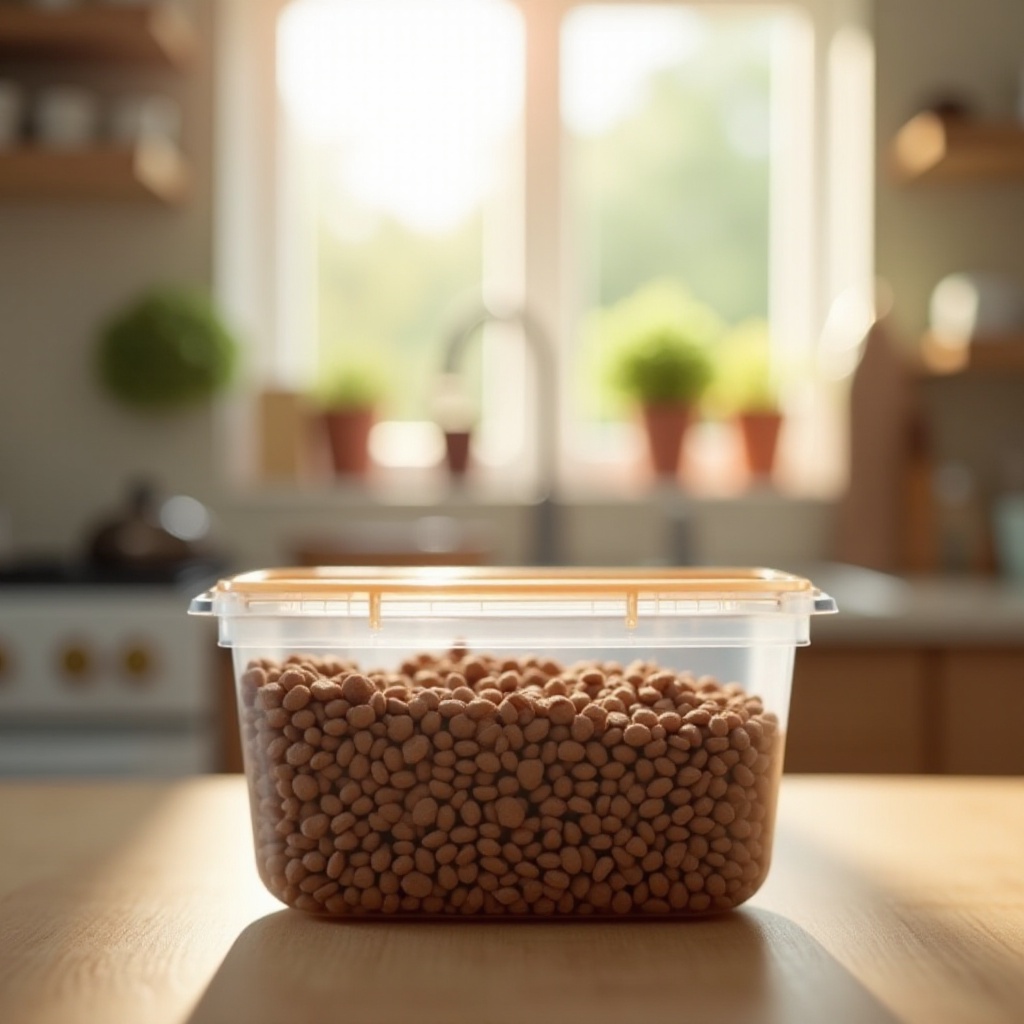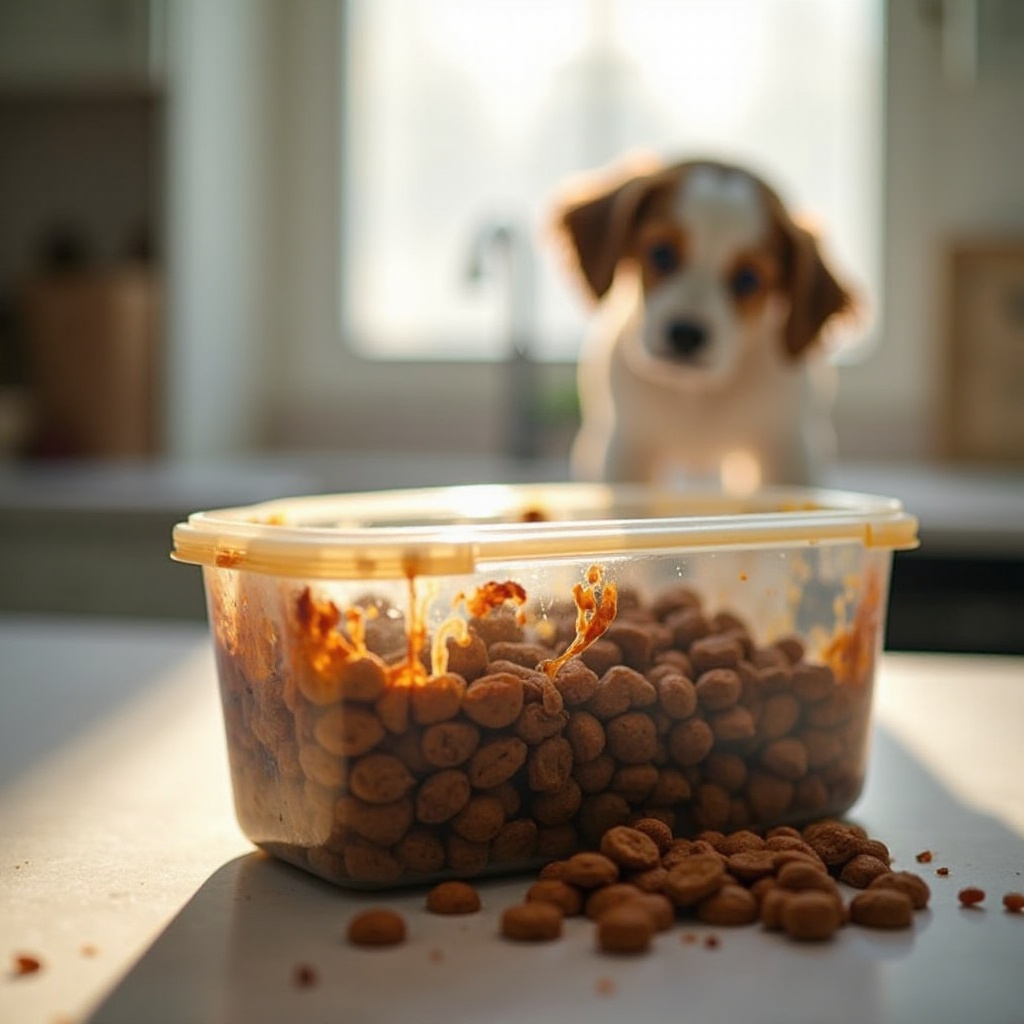Introduction
Properly storing dog food is vital for your pet’s health and happiness. Many pet owners wonder if dog food can go bad when stored in plastic containers. The answer depends on various factors including the type of food, the storage method, and the environment. In this blog, we will explore the shelf life of dog food, the pros and cons of plastic containers, and how these factors impact food quality. Additionally, we’ll discuss how to identify spoiled dog food, best storage practices, and alternative storage options.

Understanding Dog Food Shelf Life
Dog food, like any consumable product, has a shelf life. This period varies based on whether the food is dry, wet, or semi-moist. Dry kibble generally has a longer shelf life, often lasting up to 12 months if stored properly. In contrast, wet dog food has a shorter shelf life and typically needs to be consumed within a few days of opening. Semi-moist dog food falls somewhere in between. Manufacturers provide expiration dates on packaging, and it is essential to adhere to these dates to ensure your dog’s food remains fresh and safe.
Storage conditions significantly affect the shelf life of dog food. Exposure to heat, light, and humidity can accelerate spoilage and degrade the food’s nutritional quality. Thus, knowing how to store dog food correctly, regardless of its type, is crucial for maintaining its freshness.

Plastic Containers: Pros and Cons
Plastic containers are popular for storing dog food due to their convenience and versatility. They are lightweight, durable, and come in various sizes suitable for different amounts of food. Additionally, plastic containers are typically airtight, helping to prevent exposure to air and moisture, which are primary contributors to food spoilage.
However, there are some downsides to using plastic containers. Quality can vary, and some plastics may leach chemicals into the food, especially if they are not food-grade or if the containers are exposed to extreme temperatures. These chemicals can potentially harm your dog over time. Furthermore, plastic containers can develop scratches where bacteria and mold can thrive, affecting the food stored inside.
Carefully weigh these pros and cons and choose high-quality, food-grade plastic containers if you opt to store your dog’s food in plastic.
How Plastic Containers Impact Dog Food Quality
Plastic containers can affect the quality of dog food in several ways. Airtight seals are crucial in preserving the food’s freshness and nutritional value. Airtight plastic containers prevent the ingress of air and moisture, which can cause oxidation and mold growth.
However, not all plastics are the same. Non-food-grade plastics might release harmful chemicals into the food over time, especially when scratched or exposed to high temperatures. BPA, for instance, is a common chemical found in some plastics that can be hazardous to your pet’s health. Always ensure that the plastic container is labeled as food-safe.
Moreover, plastic can trap odors, possibly transferring them to the food. If you switch foods frequently, lingering smells might affect your dog’s willingness to eat. Thoroughly cleaning plastic containers between uses can help mitigate this issue.
Another concern is the physical deterioration of plastic containers. Over time, even high-quality containers can develop micro-abrasions where bacteria and mold can grow, potentially contaminating the food. Regular checks and replacing containers that show signs of wear can aid in maintaining the stored dog food’s quality.
Signs Your Dog Food Has Gone Bad
Identifying spoiled dog food is crucial to prevent your pet from falling ill. Here are some signs that the food may have gone bad:
-
Off Smell: Fresh dog food has a specific smell, and any deviation can indicate spoilage. An unusual, rancid, or sour odor is a clear sign that the food is no longer good.
-
Mold or Discoloration: Visible mold, unusual discoloration, or any change in texture signals that the food should be discarded.
-
Insect Presence: Insects or their larvae in the food are clear indicators of contamination.
-
Expired Date: Always check the expiration date on the package. Consuming food past this date can be unsafe.
If you notice any of these signs, it is best to err on the side of caution and dispose of the food.

Best Practices for Storing Dog Food in Plastic Containers
Proper storage practices can significantly prolong the shelf life of dog food and ensure it remains nutritious and safe for your pet.
-
Use Food-Grade Plastic: Ensure the containers are labeled food-safe to avoid chemical leaching.
-
Clean Before Use: Always clean the container thoroughly with hot soapy water before refilling it to remove any residue or bacteria.
-
Airtight Seals: Ensure the container is airtight to prevent moisture and air from degrading the food.
-
Store in a Cool, Dry Place: Keep the container in an area unaffected by temperature fluctuations and humidity.
-
Keep the Original Packaging: Consider placing the original bag inside the plastic container to maintain the food’s barrier protection and track expiration dates.
Following these best practices can enhance the longevity and quality of the dog food stored in plastic containers.
Alternative Storage Solutions
While plastic containers are common, other storage options might better suit your needs:
- Metal Containers: Often more durable and less likely to retain food odors. Just ensure they are also airtight.
- Glass Jars: These offer a chemical-free option and are effective at keeping the food fresh, though they are more susceptible to breakage.
- Ceramic Containers: Similar to glass in that they are non-reactive and durable, suitable for smaller amounts of dog food.
Each storage solution has its pros and cons, so choose the one that works best for your situation and your dog’s needs.
Conclusion
Storing dog food in plastic containers can be effective for keeping it fresh if done correctly. The key is choosing high-quality, food-safe containers, cleaning them regularly, and storing them in optimal conditions. By recognizing the signs of spoiled dog food and following best storage practices, you can ensure your pet’s food remains safe and nutritious. Always consider alternative storage solutions if plastic containers do not meet your needs or preferences.
Frequently Asked Questions
How long can you keep dog food in a plastic container?
Dry dog food can last several months in a plastic container if it’s airtight and stored in cool, dry conditions. Wet food should be used within a few days.
Is it better to store dog food in plastic or metal containers?
Metal containers can be more durable and less likely to retain odors, but plastic containers are more lightweight and versatile. Both can be effective if they are airtight and food-safe.
What are the signs of spoiled dog food?
Spoiled dog food may have an off smell, visible mold, discoloration, or presence of insects. Always check the expiration date and discard any food that shows signs of degradation.
